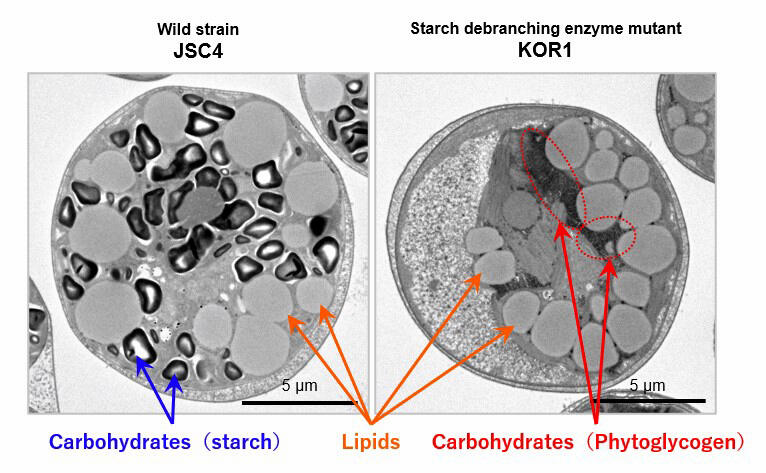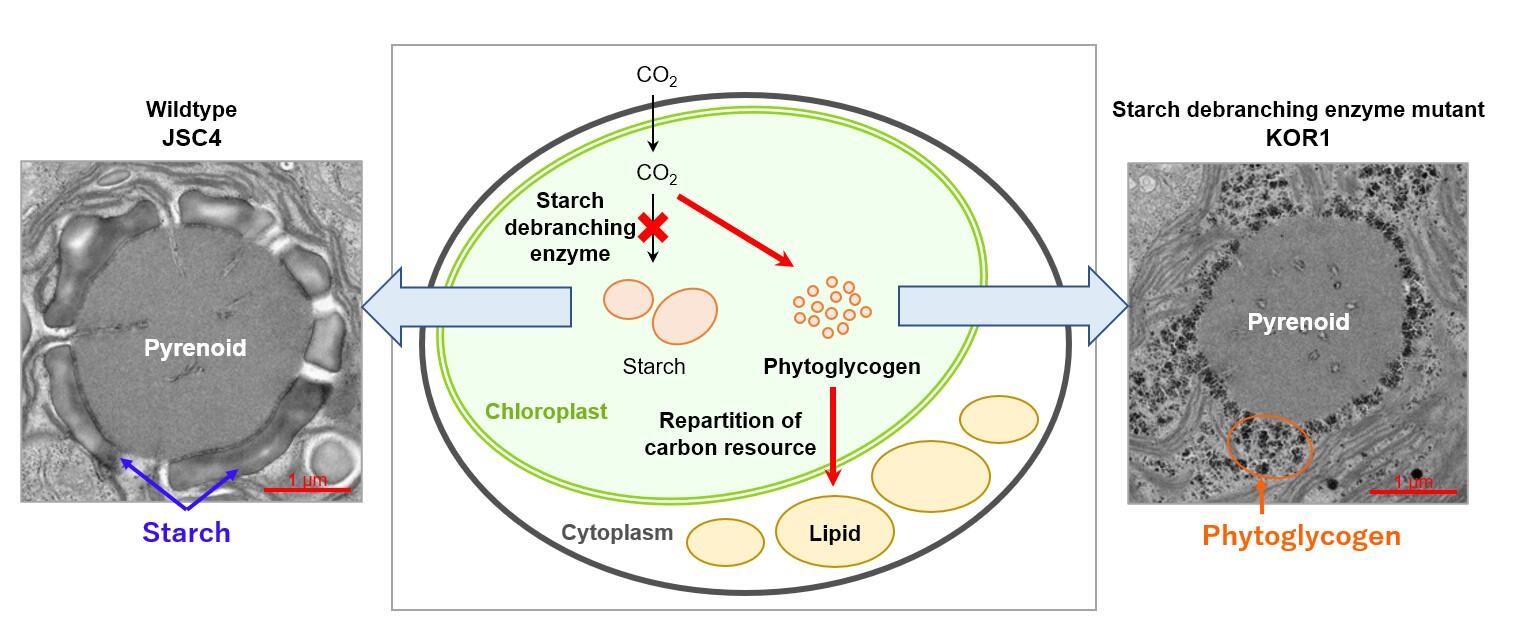The research group of Assistant Professor Yuichi Kato and Professor Tomohisa Hasunuma of the Kobe University Engineering Biology Research Center, in collaboration with Senior Principal Researcher Katsuya Satoh of National Institutes for Quantum and Radiological Science and Technology's Quantum Beam Science Research Directorate Takasaki Advanced Radiation Research Institute , have succeeded in developing a method to redistribute carbon resources in microalgae from carbohydrates into fats and oils.
Chlamydomonas, a type of microalgae, uses light energy to produce oil. It is expected that this oil will be able to be used as a biofuel, but its low production volumes in outdoor cultures with a light/dark cycle was an issue to be tackled.
Therefore, the research group independently bred the new sp/KOR1 Chlamydomonas green algae mutant strain, which produces large amounts of fats and oils even under periodic light and dark conditions, by irradiating Chlamydomonas with an ion beam to induce mutations. KOR1 has disruptions in the starch debranching enzyme gene ISA1, and it was found that this changed the carbohydrates produced by KOR1 from starches to a degradable polysaccharide: phytoglycogen.

Credit: Kobe University.
Normally, green algae cells increase synthesis of starch during light periods, while the starch degrades and decreases during dark periods. Nonetheless, there is a great accumulation of starches that have not been completely broken down. The phytoglycogen synthesized by KOR1 was completely degraded during dark periods. This data suggests that in KOR1, the starch debranching enzyme gene was disrupted, and its carbohydrates were formed as easily broken down phytoglycogen, and has clarified the mechanism by which carbon resources are redistributed from phytoglycogen to fats and oils.
This has promoted the degradation of polysaccharides and led to the success in increasing oil production under variable light/dark conditions.

Credit: Kobe University.
Professor Hasunuma said, "In the future, we would like to search for factors that control oil production, identify the rate-determining reaction for the oil-biosynthesis pathway, and conduct high oil production and mass culture tests under outdoor conditions. In addition to biofuels, we will also work to increase the production of bioplastics and functional materials."
■Starch debranching enzyme: A protein that cleaves the branched structure of starches. Functions not only to break down starches, but also in synthesis to form an appropriate chemical structure.
■Phytoglycogen: Has a structure with more branches than starches. Intracellular enzymes are likely to act on it and it is easily broken down because it is highly water-soluble.
This article has been translated by JST with permission from The Science News Ltd.(https://sci-news.co.jp/). Unauthorized reproduction of the article and photographs is prohibited.




